it all started before the common era.
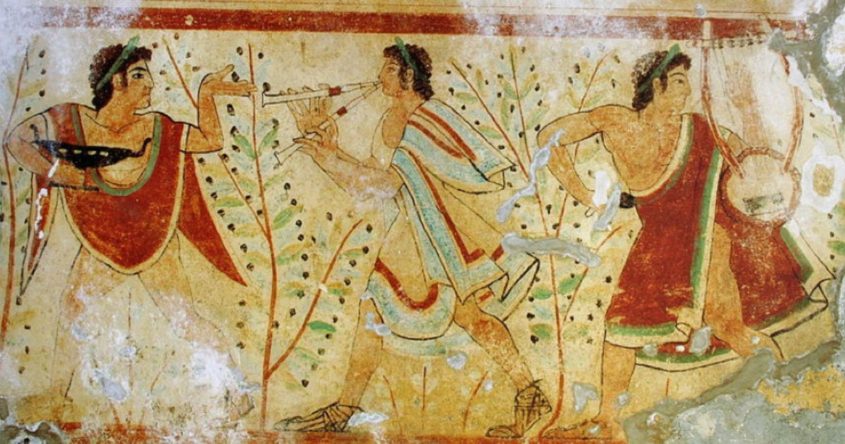
As legend has it, Rome was founded in 753 B.C. by Romulus and Remus, twin sons of Mars, the god of war. Left to drown in a basket on the Tiber by a king of nearby Alba Longa and rescued by a she-wolf, the twins lived to defeat that king and found their own city on the river’s banks in 753 B.C
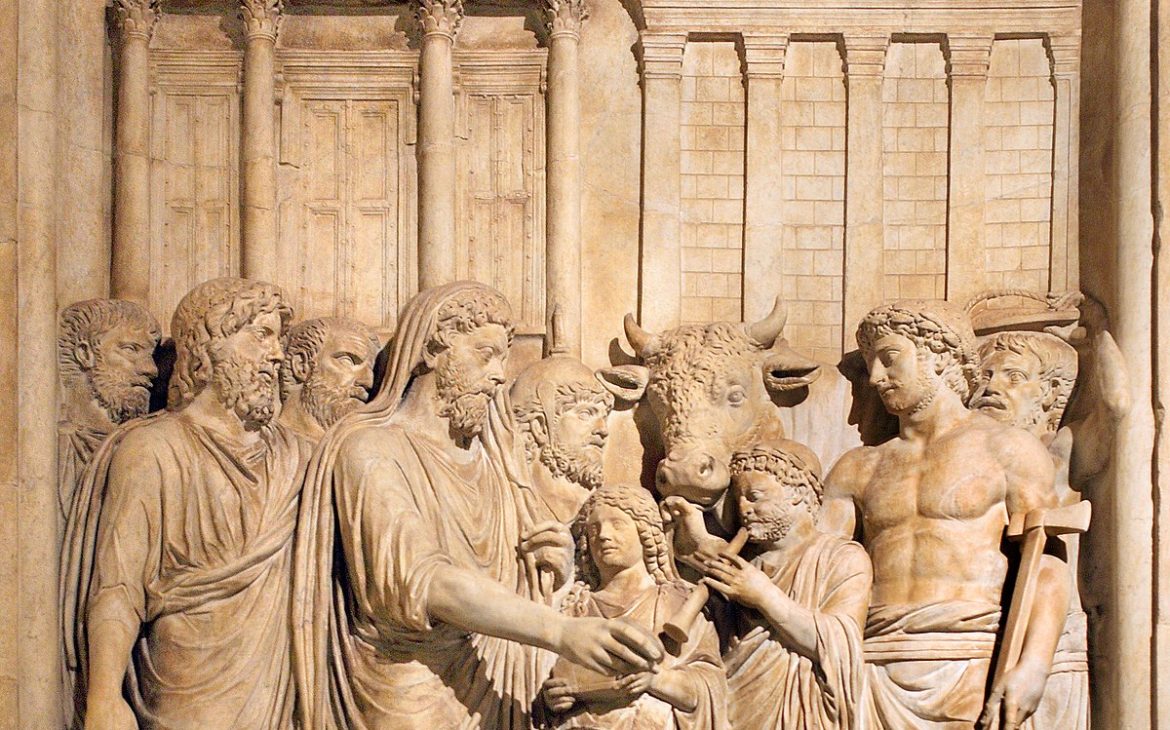
Roman clothes were made of wool, spun into cloth by the women of the family. Later on the richer people had slaves to do this work for them. If you could afford to buy clothes, you could buy linen, cotton or silk, which was brought to Rome from other parts of the Empire. Washing clothes was difficult because the Romans did not have washing machines or soap powder. They used either a chemical called sulphur or urine
The Toga
This man is wearing a toga. Only male citizens of Rome were allowed to wear togas. They were made out of wool and were very large. The material was not sewn or pinned but was draped around the body and over one arm. Togas were very expensive because of the large amount of material needed to make them and very heavy. It was the law that all citizens wore togas for public events. They were even told which color of toga they had to wear:
A plain white toga was worn by all adult male citizens. An off-white toga with a purple border was worn by magistrates and upper-class boys. A toga made of dark-colored wool was worn after someone had died. A bleached toga was worn by politicians. A purple toga with gold embroidery was worn by a victorious general and later by emperors.
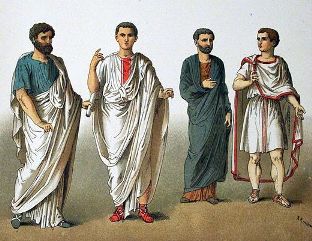
In later times it became more acceptable to wear togas of different colors with embroidery but this was frowned on by those who preferred to keep to the established order.
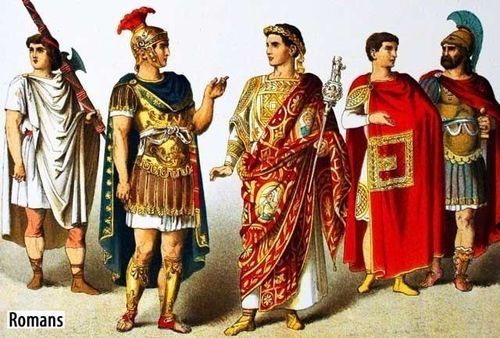
The Tunic
The tunic was standard dress for all men from slaves to the nobles. It could be worn plain, belted at the waist or under a cloak. Citizens of Rome would wear a tunic under their toga.

The simplest and cheapest tunics were made by sewing two pieces of wool together to make a tube with holes for the arms. For those that could afford it tunics could be made of linen or even silk. The tunic would be worn belted at the waist and just covering the knees.
women’s fashion
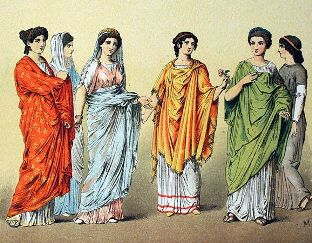
The basic garment was a tunic, either in the Greek style of a chiton, or a peplos. Both of these were simple, loose-fitted, long dresses attaching at the shoulder, often with brooches. Once a woman married, she began to wear a stola, a long, draped garment. Respectable women under the empire, however, never wore togas–to do so meant you were either a prostitute or adulteress. Hair was a platform for a great deal of opulent creativity and could give our most elaborate modern stylists a run for their money. Piles of curls, wigs, gold hairnets, coils of braids, finger waves, and more were common, and women were expected to spend a great deal of time on fixing it. They even had special servants, called ornatrices, to fix their hair for them.
Shoes
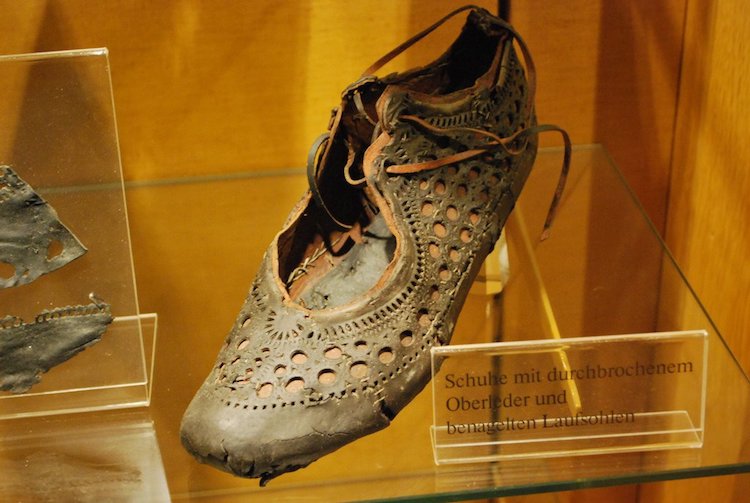
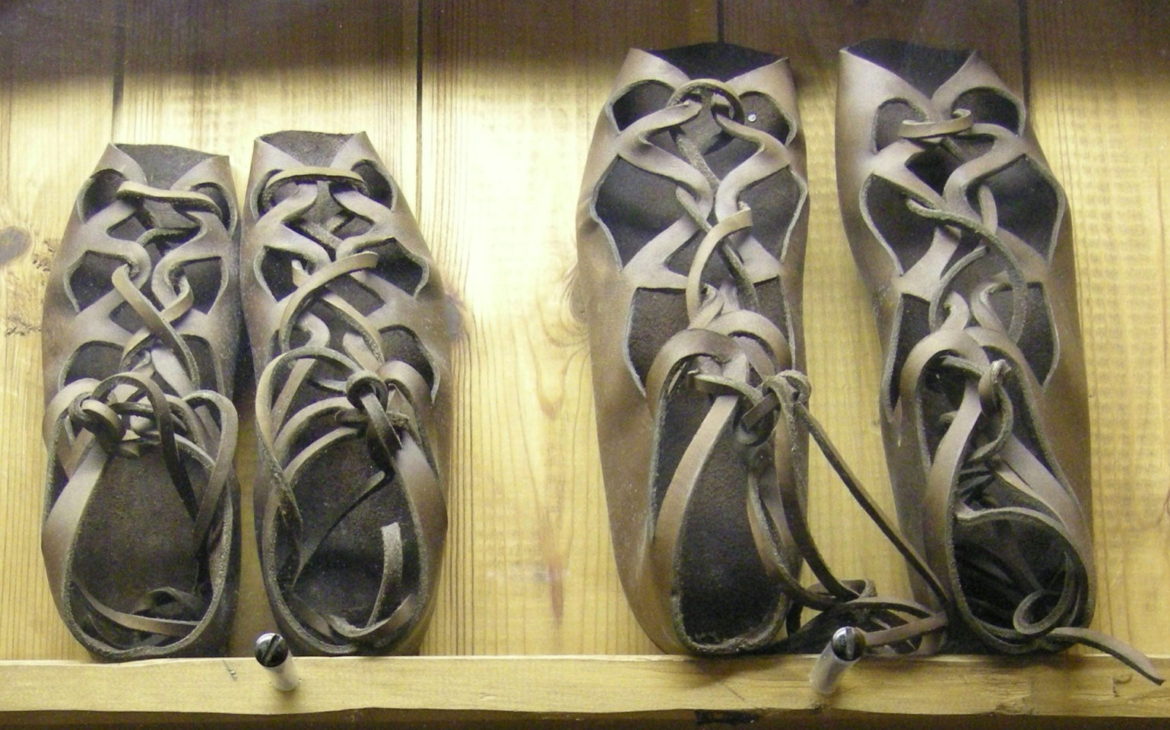
Indoors, the Romans wore open-toed sandals. However, outdoors they preferred to wear shoes that covered their toes. The Romans made shoes and sandals by fixing strips of leather to a tough leather or cork base. Sandals, to be worn indoors or in the summer, had a smaller number of leather strips. Shoes for walking, for winter or for soldiers had many more leather strips to cover the toes and provide more warmth.
Thank you, see you soon..






